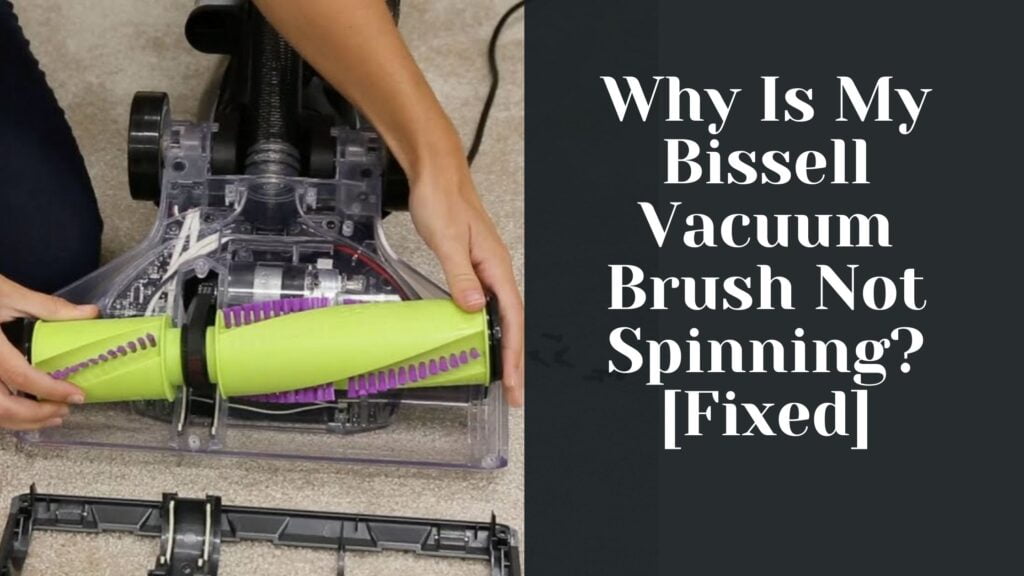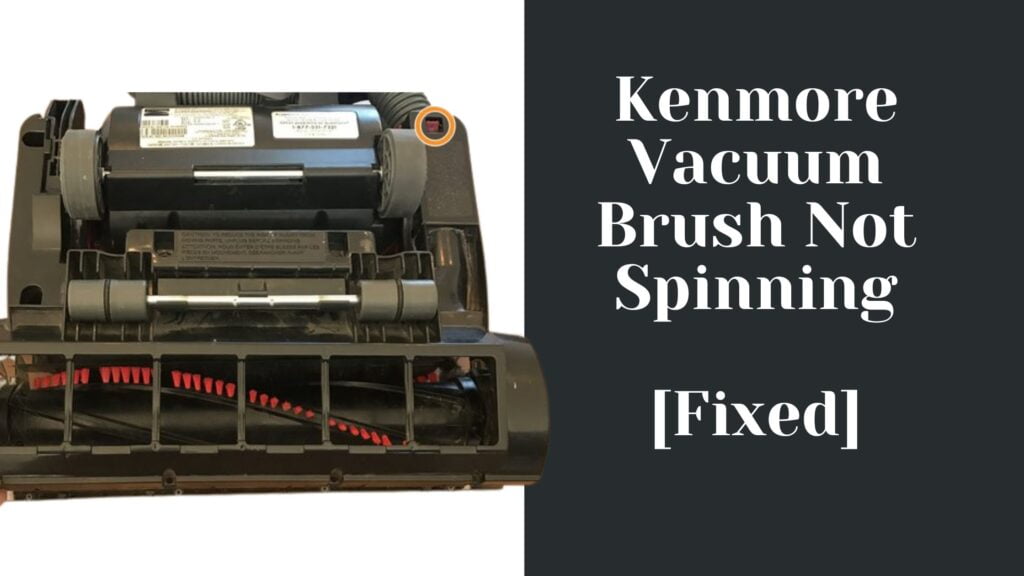Recognizing the signs of a failing battery is a must for keeping your Dyson running smoothly and avoiding loss of performance.
There are a few indicators to help you determine if your Dyson battery needs changing.
If your Dyson starts experiencing shorter run times, this may be a sign that the battery is declining. Additionally, if the vacuum stops charging properly, or if a flashing red light appears on the vacuum, it could be time to consider a new battery.
Today, I am going to walk you through exactly how to know if your Dyson battery needs replacing and how to go about it 🙂
Signs Your Dyson Battery Needs Replacing
Here are the most common signs you should watch out for:
1. Power Loss
One of the most common signs that your Dyson battery needs replacing is a noticeable loss of power during normal use.
This can manifest as a weaker suction or less effective cleaning, even when not using the MAX mode.
If you find that your vacuum is struggling to pick up dirt and debris, it might be time to consider a replacement battery.
2. Flashing Lights
Another indicator that your battery may require replacement is the presence of flashing lights on your Dyson.
For example, a flashing red light typically indicates a serious fault with your vacuum’s battery.
Additionally, if your vacuum displays more than 12 flashing red lights, this is a clear sign that you should seek a replacement battery.
3. Reduced Run Time
A significant decline in your vacuum’s run time could also signal that the battery needs replacing.
When you notice that your vacuum’s battery is unable to hold a charge for its usual cleaning duration, it might be time to troubleshoot the issue and potentially purchase a new battery.
If you’re experiencing any of these issues, the first step is to ensure that your vacuum is charging correctly.
Check for any damage to the charging cable or dock, as well as your outlet.
If these components appear to be functioning properly, it’s likely that a replacement battery will be necessary to restore your Dyson vacuum’s performance.
Choosing a Replacement Battery
Genuine Dyson Battery Vs. Generic Options
When considering a new battery for your Dyson vacuum, you will likely come across both genuine Dyson batteries and generic options.
Genuine Dyson batteries are designed specifically for your vacuum, ensuring optimal performance and a perfect fit.
On the other hand, generic options may be more affordable but could potentially compromise the performance or longevity of your vacuum.
To make the best decision, consider the price difference and weigh it against the importance of maintaining your vacuum’s performance.
Keep in mind that opting for a genuine Dyson battery may save you from potential issues related to compatibility and warranty claims.
Compatibility and Models
Before purchasing a replacement battery, it’s essential to confirm your vacuum model’s compatibility.
Dyson offers batteries for various vacuum models like the Dyson V8 and Dyson V12. Each vacuum model requires a specific battery type to function correctly.
To identify the right battery for your vacuum, check the information located on your vacuum where the handle meets the battery, or consult your vacuum’s user manual.
As you search for a new battery, pay close attention to the product descriptions, and make sure they match your vacuum model.
Following these guidelines will help you make the right decision and keep your Dyson vacuum running at its best.
How to Replace the Battery
Gathering Necessary Tools
Before replacing your Dyson battery, ensure that you have the necessary tools and equipment for the task.
You will need a new battery, a compatible screwdriver (typically a Phillips-head), and a clean, flat surface to work on.
It’s also recommended to consult your Dyson vacuum’s manual to confirm the battery type and possible warranty coverage.
Step-by-Step Replacement Process
- Power off and unplug your vacuum: Make sure your vacuum is switched off and disconnected from any charging cables to prevent electric shock or damage to the vacuum.
- Remove the old battery: Locate the battery on your vacuum. It is usually found at the bottom of the handle. Identify the screws that hold the battery in place and use your screwdriver to remove them. Carefully detach the old battery from the handle, making sure to not damage any internal wiring.
- Inspect the vacuum for damage: Before installing the new battery, take a moment to inspect the vacuum and its connectors for any potential damage or debris that could cause future issues. Clean any dirty connectors or areas as necessary.
- Install the new battery: Align the new battery with the vacuum’s connectors and gently push it into place. Once it is connected and sitting flush with the handle, replace the screws you removed earlier to secure the battery in place. Be careful not to overtighten the screws, as this may cause damage to the vacuum or battery.
- Test the vacuum to ensure proper installation: Reconnect your vacuum to the charging cable and allow it to charge for the recommended duration stated in your Dyson manual. After charging, turn on your vacuum to make sure it is working properly and that the battery replacement was successful.
By following these steps, you can successfully replace the battery in your Dyson vacuum, ensuring a longer life and improved performance for your device.
Extending Battery Life and Performance
Once you replace your Dyson battery, there are a few things you could do to ensure it lasts for as long as possible:
1. Optimal Charging Habits
To extend the life of your Dyson battery, it’s essential to develop optimal charging habits.
Lithium-ion batteries typically have a lifespan of up to three years with proper maintenance.
Always charge your cordless vacuum when the battery is low on energy.
Avoid overcharging, as this might damage the battery.
Using normal mode rather than max mode can also prolong battery life by reducing energy usage.
2. Proper Storage and Usage
Storing your cordless vacuum at room temperature is crucial for maintaining the battery’s performance.
Keep it away from direct sunlight and heat sources, such as radiators or boiler cupboards.
Allow the vacuum to cool down after use before connecting it to the dock to recharge.
3. Maintaining Your Cordless Vacuum
Regular maintenance is key to preserving your Dyson vacuum’s battery life.
Follow these guidelines:
- Check for debris or obstructions in the filter, nozzle, or brush bar. Clean these parts as needed to maintain optimal performance.
- Inspect the vacuum for any loose or damaged components. If necessary, replace the parts to keep your vacuum functioning effectively.
- If you frequently use your cordless vacuum, consider investing in a spare battery to alternate between the two and prevent overexertion on a single battery. This could help extend the life of both batteries.
- Protect your vacuum from over-current by ensuring it’s connected to a surge protector while charging.
By following these tips, you can maintain your Dyson cordless vacuum’s performance and extend its battery life.
Additional Dyson Battery Support
Troubleshooting Common Issues
If you are experiencing issues with your Dyson vacuum battery, try these troubleshooting steps before considering a replacement:
- Ensuring proper storage: Maintain your battery’s longevity by storing the vacuum in a cool, dry place when not in use. Avoid exposing it to extreme temperatures or direct sunlight.
- Battery cells: The performance of your Dyson battery may decline over time due to its cells wearing down. Check the battery’s charge level after a full charging cycle. If it is draining too quickly, it might be time for a replacement.
- Charging issues: Make sure your vacuum is charging properly. A solid yellow light indicates a temporary fault, and the vacuum may not be charging correctly. A flashing red light signifies a more serious fault and warrants contacting customer support.
- Cooling down: After using your vacuum, allow it to cool down before docking and charging. This helps preserve the battery life.
Contacting Customer Support
If you’ve tried the above troubleshooting tips and are still experiencing problems with your Dyson battery, it’s time to reach out to their customer support team.
They can assist you with further troubleshooting or help you determine if you need a new battery.
To contact Dyson customer support, visit their support page.
Conclusion
Knowing when to replace your Dyson battery is essential for maintaining your vacuum’s performance.
Keep an eye on the runtime and performance of your vacuum cleaner.
If you notice it is not lasting as long as it used to or has a significant decline in suction power, it may be time to consider a battery replacement.
To prolong the life of your Dyson battery, ensure you follow proper charging and storage practices. Letting your machine cool down after use before recharging is one way to preserve battery life.
Also, remember not to store your vacuum in extreme temperatures, as that can negatively impact battery longevity.
In the event you need to replace the battery, consult your vacuum cleaner’s manual or refer to online resources for guidance. There are resources available, such as video tutorials, to assist you in replacing the battery on your Dyson vacuum.
Remember, regular maintenance and attentive care will ensure the longevity of your vacuum cleaner and help you get the most out of your investment 🙂




















